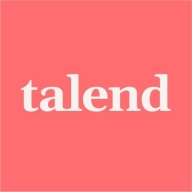

Talend Data Management Platform and Azure Data Factory compete in the data integration and management category. Azure Data Factory holds the upper hand due to its seamless integration with Azure services, strong scalability, and user-friendly interface.
Features: Talend Data Management Platform offers a central repository for metadata sharing, advanced monitoring, and robust connectivity and integration features which simplify data handling. It is recognized for its ease of use and strong community support. Azure Data Factory is notable for its drag-and-drop interface, seamless integration with Azure services, and cloud-native pipeline orchestration, making it ideal for organizations invested in the Microsoft ecosystem.
Room for Improvement: Talend encounters issues with installation errors and documentation accuracy, with users suggesting enhancements in version control and machine learning features. Azure Data Factory requires improved cost transparency and better integration with non-Microsoft platforms, alongside enhanced real-time data processing capabilities.
Ease of Deployment and Customer Service: Talend primarily focuses on on-premises deployment, offering stable performance but facing criticism in its technical support efficiency. Azure Data Factory, as a cloud-native solution, excels in public cloud deployments but struggles with complex setup processes and requires better preemptive support solutions.
Pricing and ROI: Talend uses a flexible per-user licensing model that may become costly for larger teams but remains competitive compared to platforms like Informatica. Azure Data Factory's pay-as-you-go model aligns with scalable cloud environments but raises concerns about cost predictability, even though it offers good value when efficiently utilized.
The technical support from Microsoft is rated an eight out of ten.
The technical support is responsive and helpful
The technical support for Azure Data Factory is generally acceptable.
Azure Data Factory is highly scalable.
The solution has a high level of stability, roughly a nine out of ten.
We have not encountered many issues with remote engines, and the interfaces are properly developed.
Incorporating more dedicated API sources to specific services like HubSpot CRM or Salesforce would be beneficial.
There is a problem with the integration with third-party solutions, particularly with SAP.
Sometimes, the compute fails to process data if there is a heavy load suddenly, and it doesn't scale up automatically.
Data management could also encompass APIs and real-time streaming data integration.
The pricing is cost-effective.
It is considered cost-effective.
It connects to different sources out-of-the-box, making integration much easier.
The interface of Azure Data Factory is very usable with a more interactive visual experience, making it easier for people who are not as experienced in coding to work with.
I find the most valuable feature in Azure Data Factory to be its ability to handle large datasets.
I have successfully requested the necessary patch from Talend support multiple times to align different studio versions across the team of developers.


Azure Data Factory efficiently manages and integrates data from various sources, enabling seamless movement and transformation across platforms. Its valuable features include seamless integration with Azure services, handling large data volumes, flexible transformation, user-friendly interface, extensive connectors, and scalability. Users have experienced improved team performance, workflow simplification, enhanced collaboration, streamlined processes, and boosted productivity.
We monitor all Data Integration reviews to prevent fraudulent reviews and keep review quality high. We do not post reviews by company employees or direct competitors. We validate each review for authenticity via cross-reference with LinkedIn, and personal follow-up with the reviewer when necessary.